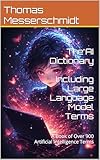

TL;DR: K-means clustering is a machine learning algorithm that divides data into clusters based on their similarities. It is often underrated and not talked about as much as other algorithms, but it has many applications in spatial analysis. It can be used for development planning, disaster management, public health, real estate, and transportation and logistics. It is highly scalable and can handle large amounts of data. To use it, you can import satellite data from the European Space Agency into Google Earth Engine and train the algorithm to identify patterns in the data.
Disclaimer: This post has been created automatically using generative AI. Including DALL-E, Gemini, OpenAI and others. Please take its contents with a grain of salt. For feedback on how we can improve, please email us
Introduction
In today’s rapidly evolving world of technology, machine learning algorithms are becoming increasingly important in various industries. However, some algorithms are not getting the recognition they deserve, despite their effectiveness. One such algorithm is K-means clustering, which has not reached the same level of popularity as other algorithms like random forest and K nearest. In this blog post, we will uncover the potential of K-means clustering for spatial analysis and its implications for GIS professionals.
What is K-means Clustering?
K-means clustering is an unsupervised machine learning approach that divides an unlabeled dataset into various clusters. This means that the algorithm works on unclassified data without human intervention. The goal of K-means is to group data points into clusters based on their similarities, with each cluster having a centroid (a set of characteristic values that define the group). The algorithm starts with a random set of centroids and iteratively calculates and updates them until the clusters stabilize.
How it Works
The K-means algorithm follows a simple process of data assignment, centroid update, and repetition until a stopping condition is met. First, the algorithm assigns each data point to the closest centroid using a distance function. Then, the centroids are recalculated by averaging all the data points assigned to that cluster. This process is repeated until the clusters stabilize or a maximum iteration threshold is reached.
K-means for Spatial Analysis
One of the main advantages of K-means clustering is its scalability, making it suitable for handling large volumes of spatial data. GIS professionals can use this algorithm to identify and interpret spatial patterns, such as market segments, urban land use types, environmental zones, and public health hotspots.
Applications of K-means Clustering
K-means clustering has various applications in spatial analysis, including:
1. Development and Urban Planning
K-means clustering can assist city planners in resource allocation and zoning restrictions by classifying metropolitan areas according to land use types. This information can help in the development and planning of smart city initiatives.
2. Disaster Management
By clustering historical disaster data, K-means can help in risk assessment and resource allocation during disaster response. It can also aid in identifying high-risk areas and prioritizing rescue efforts.
3. Public Health
In the field of public health, K-means clustering can be used for illness outbreak detection and healthcare accessibility analysis. By clustering health data, public health professionals can identify regions with high illness incidence and prioritize treatments and resource distribution.
4. Real Estate
K-means clustering can be used for property valuation and market analysis.
In conclusion, K-means clustering is a powerful unsupervised machine learning algorithm that is often underrated and underutilized in spatial analysis. This algorithm has the potential to reveal hidden insights and patterns in large spatial datasets, making it a valuable tool for GIS professionals. By grouping data points into clusters based on their similarities, K-means can aid in tasks such as land use analysis, disaster management, public health, real estate, and transportation and logistics. As we continue to delve into the world of machine learning and its impact on spatial analysis, it is important not to overlook the potential of algorithms like K-means in providing valuable insights for decision-making and problem-solving.
Discover the full story originally published on Towards AI.
Join us on this incredible generative AI journey and be a part of the revolution. Stay tuned for updates and insights on generative AI by following us on X or LinkedIn.





